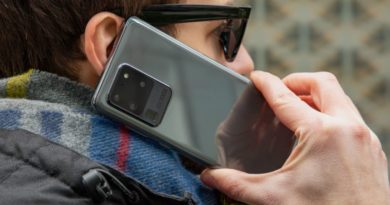Forget the iPhone 11: Samsung Galaxy A51 5G has faster speeds and bigger screen for $200 less
Samsung is revitalizing its Galaxy A series lineup for 2020, and the phone maker has left absolutely nothing on the table. The company announced today (April 8) that over the coming weeks, we’ll see no less than six A-series handsets debut — from bargains like the $109 Galaxy A01 all the way up to the $499 Galaxy A51 5G and $599 Galaxy A71 5G, which will be among the cheapest 5G-capable phones we expect to see all year.
If you don’t need 5G — and given the speeds we’re seeing so far, you don’t — there are plenty of affordable options across the lower end of the range, like the $179 Galaxy A11 and $249 Galaxy A21. Read on for a closer look at Samsung’s upcoming midrange offerings.
Samsung Galaxy A71 5G and Galaxy A51 5G
We’ll start at the top of the pecking order, where Samsung is offering two 5G devices: the Galaxy A51 5G, for $499, and the Galaxy A71 5G, for $599. Both models come with massive AMOLED Infinity-O displays, though the A71’s is a bit bigger — 6.7 inches versus 6.4 inches. No matter which you choose, though, you’ll still get a large 4,500-mAh battery, 128GB of storage and 6GB of RAM.
The A71 has a few small perks to go along with its $100 premium. It has a 64-megapixel quad-lens rear camera system, which looks to be a slight upgrade over the A51 5G’s 48-MP stack, and the same ultrawide and macro optics serving as backup. The A71 can also charge a bit faster, with its exclusive 25-watt fast charging capability; the A51 5G tops out at 15 watts.
We’re still waiting for specifics on the processors inside these phones, though we assume they tout either Samsung’s in-house Exynos 980 chipset or Qualcomm’s Snapdragon 765 platform. Both chips have fully-integrated 5G modems, so it really depends on which silicon is better suited for emerging 5G infrastructure in regions in which the phones are sold.
We’ve also yet to receive confirmation on which carriers will offer each model, or when they’ll be available to buy. Nevertheless, the Galaxy A51 5G in particular looks like a formidable alternative to the TCL 10 5G, which is expected to debut at a similar sub-$500 price when it begins shipping within the next few months.
Samsung Galaxy A51 and Galaxy A21
Then there are the non-5G midrange Galaxy A options for the year: The $249 Galaxy A21 and $399 Galaxy A51 (sans 5G). The 4G LTE version of the A51 is largely the same as the 5G one mentioned earlier, except it has 4GB of RAM rather than 6GB, and a slightly smaller 4,000-mAh battery. As a result, it’ll cost $100 less than the 5G model, and you can buy it through Verizon beginning April 9 and Sprint on April 10. The A51 will also arrive on AT&T in May.
The Galaxy A21 will likely hit the sweet spot for most budget phone buyers when it releases later this summer. At just $249, it looks to be a welcome adversary for the just-released Moto G Power, and an alternative to Nokia’s solid range of options in the price range. The Galaxy A21 also has a quad-lens rear camera, like its more expensive brethren, though the main lens maxes out at 16MP.
Inside the A21, there’s a 4,000-mAh battery with 15-watt charging, 3GB of RAM and just 32GB of onboard memory — though a microSD slot is there for expandability as it is on all A-series models. You do lose the A51’s in-display fingerprint sensor in favor for a more traditional scanner on the back, and the A21’s 6.5-inch display is of the LCD variety, rather than AMOLED. There’s also a much more prominent bottom bezel on this model compared to the pricier variants, though that’s really to be expected at this price point.
Samsung Galaxy A11 and Galaxy A01
Rounding out the family are the budget Galaxy phones: The $109 Galaxy A01, coming April 9, and the $179 Galaxy A11, arriving this summer. These devices are quite different across the board. The A11 is larger than the A01, at 6.4 inches rather than 5.7 inches. The A11 also packs a triple-lens camera which includes an ultrawide shooter, whereas the A01 makes do with only a depth sensor for bokeh shots.
Inside, both devices utilize just 2GB of RAM, but the Galaxy A11 has more storage: 32GB instead of 16GB (again, a microSD card will quell any space concerns). The A01 also has the smallest battery of the bunch, at 3,000 mAh. As with the other models, Samsung is tight-lipped about the processors inside these phones — though we know both will eventually be offered through AT&T’s prepaid channel and Cricket Wireless, in addition to other carriers.
Outlook
Last year’s Galaxy A50 and Galaxy A20 were critical for Samsung. For years, the phone maker innovated in the flagship space, while churning out forgettable and dated midrange and budget handsets with little value appeal. That changed in 2019, and with the forthcoming Galaxy A series updates, it appears the tech giant is doubling down on that initiative.
We’re looking forward to getting our hands on each of these phones to see how the company takes the fight to bargain mainstays like Motorola and Nokia, as well as relatively new players in the segment like Google and TCL. What’s more, the prospect of a 5G phone for as little as $500 means huge things for accessibility of the next-gen networking standard, especially as carriers continue to light up towers and deliver faster networks to more areas of the country.
Stay tuned over the coming weeks for our full impressions of Samsung’s 2020 Galaxy A-series handsets.

